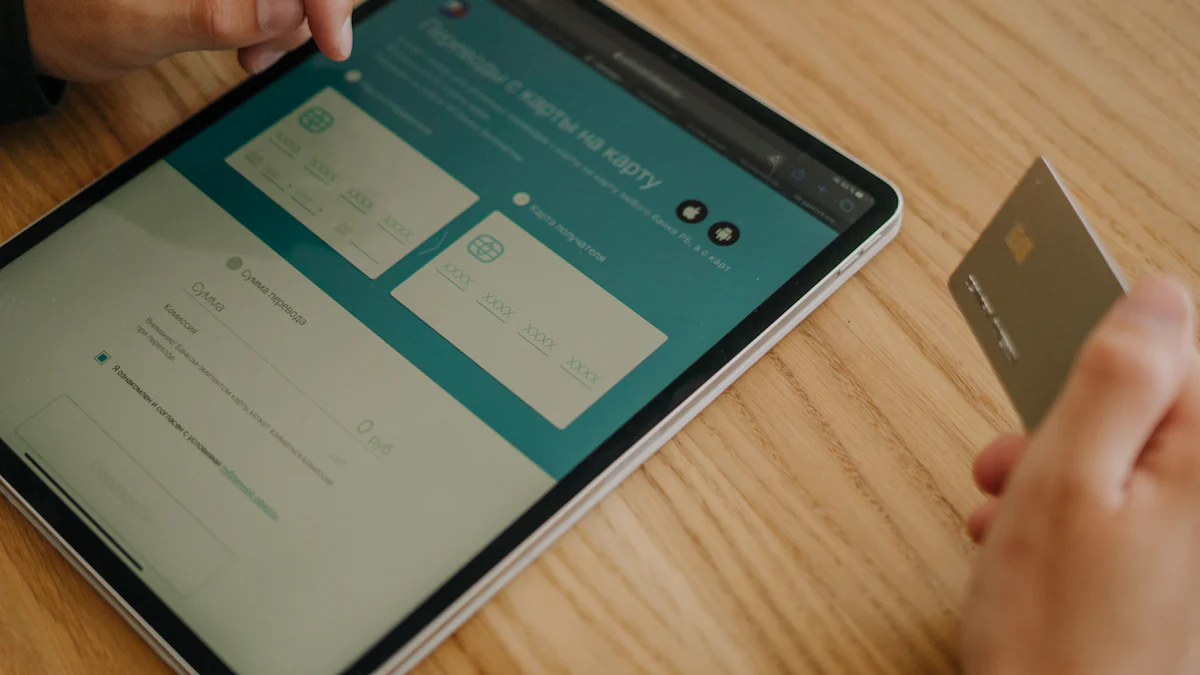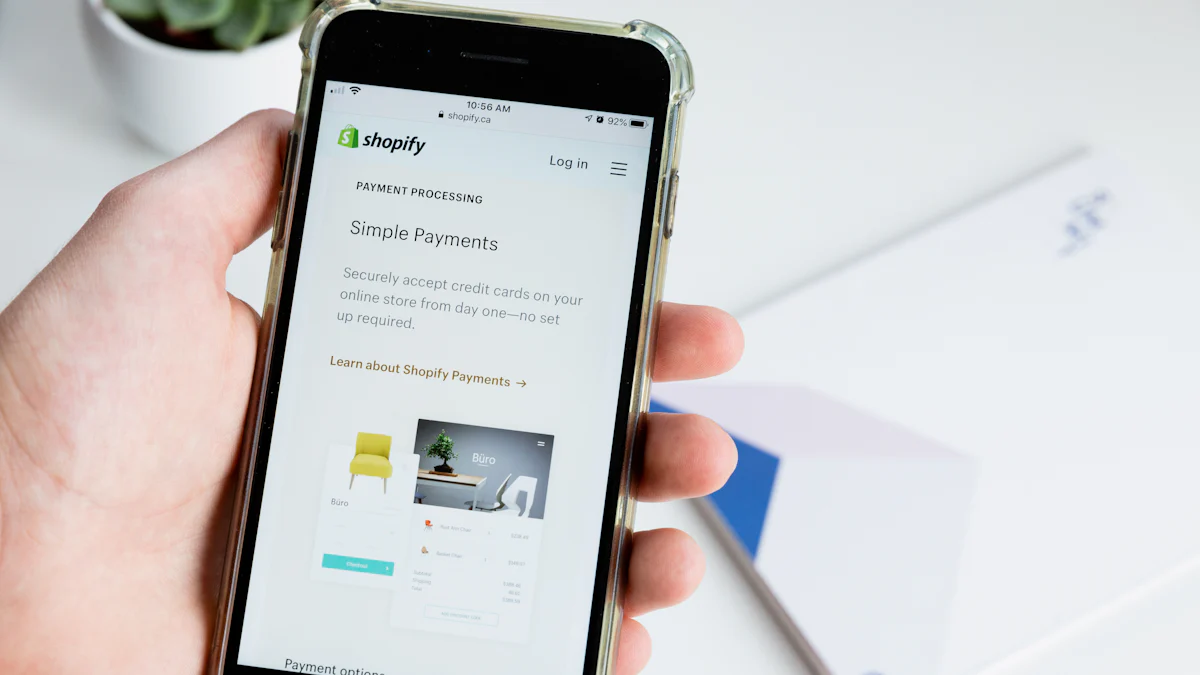Navigating Payment Orchestration Platforms: Key Factors to Consider

A payment orchestration platform serves as a centralized hub for managing various payment processes. It simplifies complex payment systems by integrating multiple payment gateways, processors, and methods into one cohesive solution. This platform plays a crucial role in optimizing your payment strategies and infrastructure. By streamlining operations, it enhances efficiency and reduces costs. The market for these platforms is growing rapidly, valued at $1.45 billion in 2023, with a projected compound annual growth rate of 24.7% from 2023 to 2030. This growth underscores the increasing importance of payment orchestration in today's digital economy.
Understanding Payment Orchestration Platforms
Definition and Core Functionality
Payment orchestration platforms serve as a centralized hub for managing your payment processes. These platforms integrate multiple payment gateways, processors, and methods into one cohesive solution. By doing so, they simplify the complex landscape of payment processing, especially for businesses operating globally. You can connect to various payment partners through a single interface, which allows you to manage transaction routing rules and access transaction optimizers like network tokens and account updaters. This setup enhances the speed and efficiency of your payment strategy, ultimately maximizing financial performance.
Importance in the Payment Ecosystem
In today's digital economy, payment orchestration platforms play a vital role. They provide a unified software layer that manages diverse payment service providers, acquirers, and banks. This integration is crucial for businesses aiming to expand their reach across different geographies. With these platforms, you can accept payments from customers worldwide, offering them a variety of payment options. This not only improves the customer experience but also boosts brand loyalty.
Moreover, payment orchestration platforms streamline both backend and front-end operations. They facilitate the integration of websites with multiple payment processors, providing a seamless payment flow. This capability is particularly beneficial for businesses with global growth goals. By using a single platform, you can coordinate complex payment gateways and providers, enabling you to scale your business faster and more efficiently.
Benefits of Payment Orchestration Platforms

Enhanced Payment Diversity
You gain access to a wide range of payment methods with payment orchestration platforms. These platforms integrate multiple gateways and processors, allowing you to offer customers their preferred payment options. This flexibility enhances the customer experience and can lead to increased sales. By accommodating various payment preferences, you cater to a broader audience, which is crucial in today's diverse market.
Global Reach and Scalability
Payment orchestration platforms empower you to expand your business globally. They facilitate international transactions by supporting different currencies and regions. This capability allows you to reach customers worldwide without the hassle of managing multiple payment systems. As your business grows, these platforms scale with you, ensuring seamless operations across borders. You can manage everything from a single interface, making it easier to handle increased transaction volumes.
Cost Efficiency
Optimizing payment routing and minimizing processing fees become achievable with payment orchestration platforms. They provide cost-effective solutions by directing transactions through the most efficient gateways. This optimization reduces transaction costs and improves approval rates. You maintain control over multiple connections, ensuring redundancy and security. By securely managing customer information and adhering to regulations, you protect your business while keeping costs in check.
Improved Security and Compliance
Payment orchestration platforms significantly enhance security and compliance in your payment processes. They offer robust solutions that protect sensitive customer information and ensure adherence to industry regulations. By integrating multiple payment gateways and methods, these platforms provide a comprehensive approach to managing and securing transactions.
Key Security Features:
Data Encryption: Payment orchestration platforms use advanced encryption techniques to safeguard customer data. This ensures that sensitive information remains confidential and protected from unauthorized access.
Fraud Detection: These platforms incorporate sophisticated fraud detection tools. By analyzing transaction patterns and identifying anomalies, they help prevent fraudulent activities and protect your business from potential losses.
Secure Authentication: Multi-factor authentication (MFA) adds an extra layer of security. It verifies the identity of users before allowing access to payment systems, reducing the risk of unauthorized transactions.
Compliance Benefits:
Regulatory Adherence: Payment orchestration platforms ensure compliance with global payment standards and regulations, such as PCI DSS (Payment Card Industry Data Security Standard). This compliance is crucial for maintaining trust with customers and avoiding legal penalties.
Audit Trails: Comprehensive audit trails track every transaction and change within the system. This transparency helps in monitoring compliance and identifying any irregularities in payment processes.
Data Privacy: These platforms prioritize data privacy by implementing strict access controls and data protection measures. This commitment to privacy aligns with regulations like GDPR (General Data Protection Regulation), ensuring that customer data is handled responsibly.
By choosing a payment orchestration platform, you enhance the security and compliance of your payment operations. This not only protects your business but also builds trust with your customers, who can feel confident that their information is safe and secure.
Comparing Payment Orchestration with Other Payment Solutions
Payment Gateways vs. Payment Orchestration Platforms
When you explore payment solutions, you often encounter payment gateways. These gateways act as intermediaries between your business and the financial institutions that process payments. They authorize transactions and ensure funds transfer securely from customers to merchants. However, they focus on a single payment method or processor.
In contrast, payment orchestration platforms offer a more comprehensive solution. They integrate multiple payment gateways, processors, and methods into one unified system. This integration allows you to manage various payment options through a single interface. You gain flexibility and control over your payment processes, which enhances efficiency and customer satisfaction.
Key Differences:
Scope: Payment gateways handle specific transactions, while orchestration platforms manage multiple gateways and methods.
Flexibility: Orchestration platforms provide more options for routing transactions, optimizing costs, and improving approval rates.
Integration: With orchestration platforms, you can easily add new payment methods and gateways without significant changes to your infrastructure.
TechMagic, a leader in payment orchestration, emphasizes the importance of choosing platforms that adhere to stringent security protocols. This ensures the safeguarding of sensitive customer data and compliance with industry standards.
Payment Processors vs. Payment Orchestration Platforms
Payment processors play a crucial role in handling the technical aspects of transactions. They connect your business to the banking system, facilitating the transfer of funds. While essential, they often limit you to specific payment methods and lack the flexibility needed for global operations.
Payment orchestration platforms, on the other hand, offer a broader range of services. They not only connect you to multiple processors but also provide tools for optimizing payment routing and managing transaction flows. This capability allows you to adapt to changing market demands and expand your reach.
Advantages of Orchestration Platforms:
Global Reach: Orchestration platforms support international transactions, enabling you to accept payments from customers worldwide.
Cost Optimization: By selecting the most efficient payment routes, these platforms help reduce transaction fees and improve approval rates.
Security and Compliance: They incorporate advanced security measures like encryption and tokenization, ensuring compliance with standards such as PCI DSS.
Apexx Global highlights the need for businesses to choose platforms that ensure secure and compliant transaction processing. This is crucial in today's evolving financial landscape.
By understanding these differences, you can make informed decisions about the best payment solutions for your business. Payment orchestration platforms offer a versatile and efficient approach, allowing you to streamline operations and enhance customer experiences.
Key Factors to Consider When Choosing a Payment Orchestration Platform

When selecting a payment orchestration platform, you must evaluate several critical factors to ensure it aligns with your business needs. These considerations will help you optimize your payment processes and enhance customer satisfaction.
Payment Method Coverage
A comprehensive payment orchestration platform should support a wide array of payment methods. This includes credit cards, digital wallets, and alternative payment options. By offering diverse payment methods, you cater to various customer preferences, which can lead to increased sales and customer loyalty. A platform that integrates multiple payment gateways and processors allows you to provide these options seamlessly. This flexibility is crucial for businesses aiming to expand their reach and tap into new markets.
Security and Compliance
Security and compliance stand as paramount concerns in payment processing. You need a platform that employs advanced security measures to protect sensitive customer data. Look for features like data encryption, fraud detection tools, and secure authentication methods. These elements safeguard transactions and build trust with your customers. Additionally, the platform should comply with global payment standards and regulations, such as PCI DSS. Compliance ensures that your business avoids legal penalties and maintains a positive reputation.
Integration Capabilities
Integration capabilities determine how well the payment orchestration platform fits into your existing systems. A platform with robust integration features allows you to connect with various payment service providers and gateways effortlessly. This capability streamlines your payment processes and reduces operational complexity. You should also consider the ease of adding new payment methods or gateways as your business grows. A flexible platform adapts to your evolving needs, ensuring that you can scale efficiently without significant disruptions.
Tip: Evaluate the platform's ability to dynamically select the best gateway for each transaction. This feature can significantly enhance transaction success rates and reduce costs.
By focusing on these key factors, you can choose a payment orchestration platform that not only meets your current requirements but also supports your future growth. This strategic decision will enable you to optimize payment processes, improve customer experiences, and achieve your business objectives.
Pricing and Cost Structure
When evaluating a payment orchestration platform, understanding its pricing and cost structure is crucial. You should look for platforms that offer transparent pricing models. Hidden fees can significantly impact your bottom line, so clarity in pricing helps you budget effectively. Consider platforms that provide a clear breakdown of costs associated with each transaction, including processing fees and any additional charges for premium features.
A well-structured pricing model allows you to predict expenses and manage your financial resources efficiently. Some platforms may offer tiered pricing based on transaction volume, which can be beneficial as your business grows. By choosing a platform with a flexible cost structure, you can align your payment processing expenses with your business's financial goals.
Customer Support and Service
Reliable customer support is essential when selecting a payment orchestration platform. You need a provider that offers responsive and knowledgeable support to address any issues that may arise. Look for platforms that provide multiple support channels, such as phone, email, and live chat, ensuring you can reach assistance when needed.
Effective customer service can minimize downtime and ensure smooth payment operations. A dedicated support team can help you navigate technical challenges and optimize your payment processes. Additionally, consider platforms that offer comprehensive onboarding and training resources. These resources can empower you to make the most of the platform's features and capabilities.
Dynamic Gateway Selection
Dynamic gateway selection is a key feature of advanced payment orchestration platforms. This capability allows the platform to automatically choose the most efficient payment gateway for each transaction. By doing so, you can enhance transaction success rates and reduce processing costs.
Dynamic gateway selection optimizes payment routing by considering factors such as transaction type, location, and currency. This flexibility ensures that each transaction follows the most effective path, improving approval rates and minimizing declines. As a result, you can provide a seamless payment experience for your customers, boosting satisfaction and loyalty.
Tip: Evaluate the platform's ability to dynamically select the best gateway for each transaction. This feature can significantly enhance transaction success rates and reduce costs.
By focusing on these aspects, you can select a payment orchestration platform that aligns with your business needs and supports your growth objectives. This strategic choice will enable you to optimize payment processes, improve customer experiences, and achieve your business goals.
Transparent Pricing and Avoidance of Hidden Fees
When selecting a payment orchestration platform, understanding the pricing structure is crucial. You want to ensure that the platform offers transparent pricing without hidden fees. This transparency allows you to budget effectively and avoid unexpected costs that could impact your bottom line.
Clear Cost Breakdown: Look for platforms that provide a detailed breakdown of costs associated with each transaction. This includes processing fees and any additional charges for premium features. A clear cost structure helps you predict expenses and manage your financial resources efficiently.
Avoidance of Hidden Fees: Hidden fees can significantly affect your business's profitability. Ensure that the platform you choose clearly outlines all potential charges. This clarity helps you make informed decisions and prevents surprises in your billing statements.
Flexible Pricing Models: Some platforms offer tiered pricing based on transaction volume. This can be beneficial as your business grows, allowing you to align payment processing expenses with your financial goals. A flexible pricing model ensures that you only pay for the services you need.
By focusing on transparent pricing and avoiding hidden fees, you can select a payment orchestration platform that aligns with your business needs and supports your growth objectives.
Feedback from Industry Peers
Feedback from industry peers can provide valuable insights when choosing a payment orchestration platform. Hearing about the experiences of others in your industry can help you make informed decisions.
Peer Reviews: Seek out reviews and testimonials from businesses similar to yours. These reviews can highlight the strengths and weaknesses of different platforms, helping you identify the best fit for your needs.
Industry Forums and Groups: Participate in industry forums and groups where professionals discuss their experiences with various payment orchestration platforms. These discussions can offer practical advice and recommendations based on real-world usage.
Case Studies: Look for case studies that detail how other businesses have successfully implemented payment orchestration platforms. These studies can provide insights into the challenges faced and the solutions that worked.
By leveraging feedback from industry peers, you can gain a better understanding of the capabilities and limitations of different payment orchestration platforms. This knowledge will empower you to choose a platform that enhances your payment processes and meets your business objectives.
In this blog, you explored the essential aspects of choosing a payment orchestration platform. You learned about the benefits of enhanced payment diversity, global reach, and improved security. As you consider your options, evaluate your specific business needs to select the best platform. PayInsider Connections stands out by addressing common payment challenges with its comprehensive features. It offers seamless integration and dynamic gateway selection, ensuring efficient payment processes. By leveraging such platforms, you can optimize your payment strategy and enhance customer satisfaction.